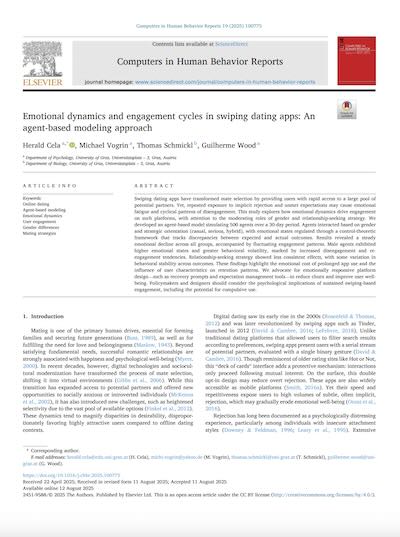Today's article comes from the journal of Computers in Human Behavior Reports. The authors are Cela et al., from the University of Graz, in Austria. In this paper they are studying what makes people engage-with, grow-disillusioned-with, leave, and then eventually return-to dating apps, again and again.
DOI: 10.1016/j.chbr.2025.100775


You must be an active Journal Club member to access this content. If you're already a member, click the blue button to login. If you're not a member yet, click the sign-up button to get started.
Login to My Account
Sign Up